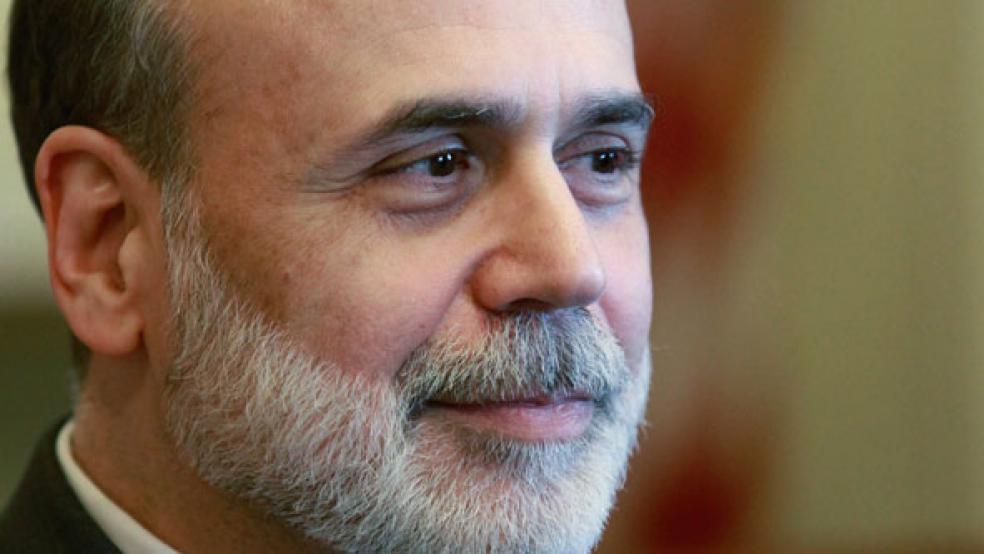As a scholar of the Great Depression and Japan’s struggles with monetary policy constrained by the zero lower bound of nominal interest rates, Ben Bernanke was an ideal candidate for comprehending and combatting the financial crisis, Great Recession and ensuing U.S. economic stagnation. In 20/20 hindsight, I don’t think President George W. Bush could have picked a more appropriate Fed chairman – Bernanke was hands down the best appointment that administration made.
Bernanke seemed to fully appreciate the severity of the financial crisis and deserves credit for preventing a much more severe global financial meltdown. He also deserves credit for coordinating monetary policy expansion with other central banks in advanced economies early on in the crisis, and for quickly setting up reciprocal international liquidity facilities and swap lines with those central banks.
The Fed also won much higher marks than the European Central Bank (ECB) for better resuscitating the balance sheets of American financial institutions than their European peers. Not all the alphabet soup of credit facilities took off as intended (e.g., the Public-Private Investment Partnership), but the kitchen sink approach was the right thing to throw at illiquid securitization markets.
Related: Ben Bernanke's 8-Year Fed Odyssey
When the economy officially entered recession in December 2007, the Fed’s policy setting Federal Open Market Committee (FOMC) rapidly lowered the federal funds rate (the Fed’s primary conventional policy lever) about four percentage points, ostensibly to the zero lower nominal bound in December 2008.
This rapid loosening of monetary policy, complemented with fiscal expansion from the American Recovery and Reinvestment Act, deserves credit for arresting the economy’s dramatic contraction, as explained in this seminal paper by Alan Blinder and Mark Zandi. Unlike the ECB, which raised its key policy rate twice (totaling half a percentage point) in 2011 only to be reversed later that year, there have been no serious blunders in the Fed’s conventional monetary policy.
If only the same could be said for fiscal policy during Bernanke’s tenure. Constitutionality questions aside, I’m sure the outgoing Fed chairman wishes qualified technocrats were at the reins of evidence-based fiscal policy in addition to monetary policy. Reading between the lines of his February 2013 testimony, Bernanke was begging Congress to moderate the pace of deficit reduction and explicitly warned that monetary policy “cannot carry the entire burden of ensuring a speedier return to economic health.” The pivot from fiscal expansion to austerity between 2010 and 2012 was an egregious blunder.
Lowering long-term interest rates was insufficient to counter that blunder, let alone dig the economy out of its demand-depressed state. But Bernanke showed resolve in turning to unconventional monetary policy. Most notably, large-scale asset purchases (or “quantitative easing”) helped cushion austerity-driven decelerations in the pace of growth since mid-2010 (when the Recovery Act peaked).
The International Monetary Fund (IMF) projects that U.S. economic output ran $786 billion (4.5 percent) below noninflationary potential in 2013. Even with five years of incredibly accommodative monetary policy, the economy is, relatively speaking, only 30 percent of the way recovered from its 2009 trough; and the economy isn’t projected to be nearing full recovery until 2018 — a decade into the downturn.
Moreover, the output gap increased in 2013, from 4.2 percent in 2012. Blame for backwards progress away from economic recovery lies with fiscal policymakers’ misplaced prioritization of deficit reduction during a deep slump. Specifically, conservatives’ use of every piece of conceivable leverage to extract government spending cuts is responsible for the Lesser Depression in which the U.S. remains mired. Unconventional monetary policy expansion would need to be coupled with government policies to boost near-term demand to be making rapid progress toward full employment.
Bernanke also dealt with Congressional obstructionism, particularly the GOP wrongly decrying and politicizing any attempt by the Federal Reserve to boost economic activity as dangerously inflationary. Furthermore, the eminently qualified Nobel laureate Peter Diamond was ostensibly denied appointment to the Federal Reserve Board by Senator Richard Shelby (R-AL)*, and seats on the Board sat vacant for far longer than merited thanks to Republican senators’ holds and filibusters.
Related: Ben Bernanke’s 6 Secrets for a Happy Life
The Federal Reserve could have eked out a bit more stimulus, albeit far from enough to restore full employment (and likely with diminishing returns on the QE front), but Bernanke was certainly concerned with the politicization of purportedly independent monetary policy, probably to the effect of somewhat impeded policy responses.
There have been some communication problems, including guidance about tapering off quantitative easing, but these hardly explain the economy’s considerable distance from being fully recovered. As Mark Thoma has correctly noted, the Fed has been guilty of routinely issuing overly optimistic economic forecasts (as has the Congressional Budget Office and IMF), thereby encouraging less policy accommodation than merited; this would be a more serious charge if Congress had been setting fiscal policy based on near-term economic forecasts. Fiscal policy has instead been set incredibly haphazardly, repeatedly at the 11th hour of political showdowns. Efforts to increase transparency in the wake of Alan Greenspan’s tenure as chairman have generally been welcomed.
Bernanke’s successor, Janet Yellen, is superbly qualified and her diagnosis of the U.S. economy and fiscal policy failures is spot on.
*This op-ed originally referred to Richard Shelby as a former senator from Alabama. It has been corrected to reflect that he is still in office.
Top Reads from The Fiscal Times:





